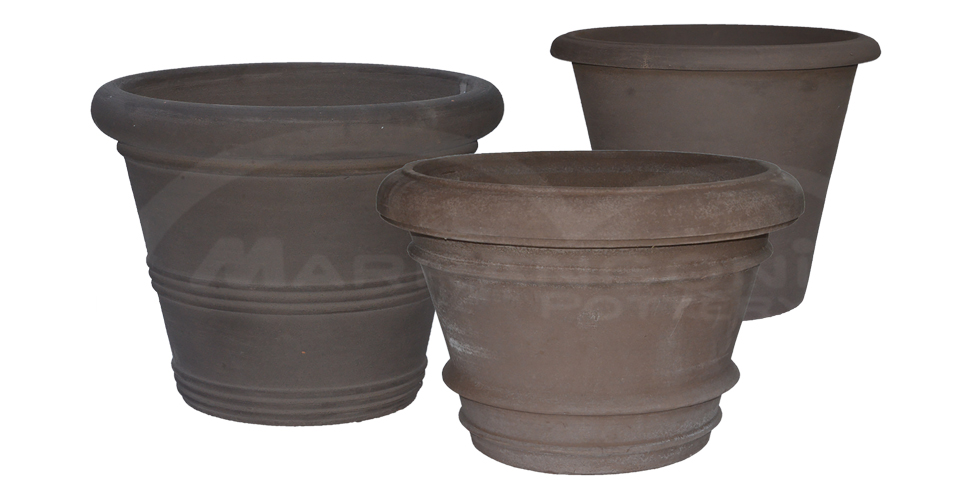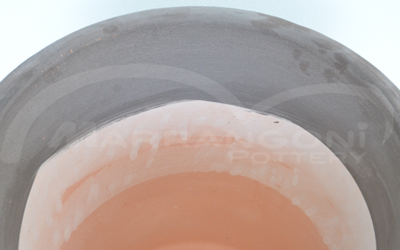The slipware technique or ingobbio


By slipware or ingobbio it means a coloring technique (but not only) of a terracotta pot by applying a layer of more
liquid clay, called slip or barbotine, on the object still to be fired. It is a hot process, in some respects similar to ceramic,
that give a different finish / color to the underlying vase.
In our production case, Tuscan clay is typically red or pink in color. With the slipware it is possible
to color the vase, in the finishing phase of the production, having a result similar to that obtained with a completely
colored mixture.
Normally the inside and the bottom of the vase are not slipped; the first because the pot will contain the plant internally
and the second because the ingobbio must be applied when the clay in the pot is still fresh and it becomes difficult
to handle upside down the piece without damaging it, especially if it is large size.
The slips allows greater flexibility for the manufacturer, who can have a wider offer in his catalog at a limited cost.
In fact, it is not easy to manage production and orders with different clays doughs. The price of a slipped colored vase is
lower than that of mixture colored body, but it pays a little in terms of quality. The slip is, anyway, a layer of clay
applied to another clay object and, although the experience of the craftsmen, it is a separate body that could breack away,
especially following shocks or particularly harsh winters. This certainly does not affect the structure of the vase,
but will still leave the underlying red color of the vase uncovered.
